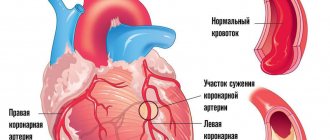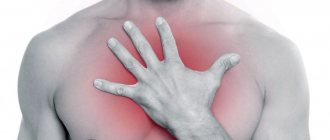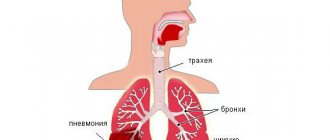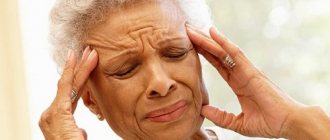People who experience back pain may not immediately understand the cause.
They take a heating pad, but if it’s kidneys, this is not recommended. It is important to understand that without an accurate diagnosis, warming cannot be done, since in the case of an inflammatory disease this can lead to complications. Not everyone knows where the kidneys hurt. How can you tell if your kidney is hurting? To do this, you need to know the anatomy of the body, then it will be easy to recognize the symptoms.
How can you tell if your kidneys are hurting?
How can you understand that it is your kidneys that are hurting? That painful phenomena in the lower back are not osteochondrosis or a manifestation of signs of appendicitis?
To understand whether the kidneys and not another organ are hurting, it is important to listen to your body to determine the location of the pain.
Different diseases exhibit different symptoms. Back pain occurs due to diseases such as osteochondrosis, appendicitis, cholecystitis, urolithiasis, pelvic inflammation, and stomach ulcers.
You can determine whether your kidneys or back hurt by certain symptoms. The fact that it is the kidneys that hurt will only be confirmed by the doctor’s final diagnosis.
How can you check if a person's discomfort is a sign of kidney disease? The pain is often not felt in the kidney area. To find out whether your kidneys or lower back hurt, you need to pay attention to other symptoms. If you have:
- pallor and swelling of the face;
- bags under the eyes;
- high blood pressure;
- fatigue;
- headache;
- chills;
- ammonia odor from the mouth;
- increased urge to urinate;
- presence of blood in the urine;
- pain when urinating,
- this indicates a violation of the kidneys.
Often kidney diseases begin with minor sensations in the bladder.
Further, the process of urination becomes painful, burning and stinging appears. There may be a constant urge to go to the toilet and urinary incontinence. Since the kidneys cannot cope with their function, the urine becomes cloudy, sand appears in it, and stained with blood.
Pain in the lower back in the center indicates a disorder in the spine. With scoliosis and osteochondrosis, discomfort occurs in certain areas of the back, namely in the upper part.
The cause of problems with the spine in the lower back may lie in radiculitis. There may be nagging or shooting pains radiating to the buttock and thigh. When discs are displaced or spina bifida, sensations appear in the central part of the lower back.
With pancreatitis, girdle pain occurs, radiating to the left side of the back, accompanied by vomiting and diarrhea. In the right hypochondrium and in the back, pain appears with cholelithiasis and cholecystitis. General malaise is accompanied by nausea, yellowing of the face, and the appearance of an unpleasant taste in the mouth.
Provoking factors for the appearance of kidney diseases can be hypothermia, infectious diseases, complications after a sore throat.
Additional causes of back pain are muscle strains after heavy physical labor. The anatomical structure of the kidneys is such that the right kidney is most often affected by the disease. The organ is located above the lower back.
Pain occurs after pressing on the right rib. Right-sided colic appears. Vision deteriorates, skin rash is possible. There is an ammonia smell from the mouth.
Only a doctor can make a final diagnosis, since these may be symptoms of damage to other organs, such as the spleen, ureter.
Analyze your condition. Unpleasant pain in the back can be a manifestation of hypothermia. Pain syndrome can be a consequence of poisoning with alcohol, salts of heavy metals, a manifestation of cancer, or an autoimmune disease.
Professional drivers will experience lower back pain, which most often has nothing to do with the kidneys. Due to prolonged sitting, blood stagnates in the lower spine and a pinched nerve occurs. Gymnastics, massage, walking can correct the situation.
Pain syndrome in women
Often the question of why the lower back hurts is asked by representatives of the fair half of humanity. Lower back pain on the right or left may be one of the first signs of the progression of dangerous gynecological diseases.
Adnexit
Causes of lower back pain on the right and left in women:
- adnexitis. Mostly pain is localized in the lower abdomen, but it also often radiates to the lower back and even to the leg;
- torsion of ovarian cyst;
- menopause;
- pregnancy.
Distinctive signs of kidney diseases
How to distinguish kidney pain from other pains? With kidney disease, painful phenomena appear under the ribs on the right or left side.
When your kidneys hurt, you experience constant aching pain that radiates to the groin area or lower abdomen. There may be discomfort on the outside of the ribs. Kidney pain is characterized by acute attacks.
Kidney disease can be determined by where it goes.
When the pelvis is inflamed, a nagging pain is observed on the affected side. If there is severe pain on the left side, this indicates a disease of the left kidney. With pyelonephritis, the temperature rises, nausea and vomiting appear. The face is very swollen in the morning. There may be a change in taste sensations.
The right kidney causes discomfort on the right side, which is why its disease is sometimes confused with appendicitis.
Kidney disease can be determined by the way it hurts.
How to determine if there are signs of kidney pain? Associated symptoms are:
- the appearance of edema;
- nausea;
- itching;
- high pressure;
- lethargy;
- fatigue.
The appearance of edema signals a disruption in the functioning of the main detoxifying organ, as it is responsible for removing excess fluid from the body.
Painful attacks that recur periodically indicate kidney pathology. Kidney stones cause unbearable pain, which intensifies with changes in body position. Urolithiasis is accompanied by a burning sensation and bleeding when urinating.
Prolapse of the kidney - nephroptosis - is characterized by periodic pulling sensations, discomfort when urinating, and stagnation of urine.
A dull ache sensation may be a symptom of kidney failure.
Infectious kidney disease glomerulonephritis does not have obvious symptoms; an admixture of blood is detected in the urine.
Pregnant women should monitor the condition of their kidneys. Since characteristic back pain is present during this period, it is important not to lose sight of such symptoms as: increased pressure, pain in the lower back, pain when urinating, a feeling of an incompletely emptied bladder.
Possible increase in temperature. Only timely consultation with a doctor will help avoid complications.
Painful sensations can be a consequence of spondylolisthesis, vertebral hernia, or a sedentary lifestyle. In this case, an orthopedic belt and anti-inflammatory ointments are effective.
Headaches due to coronavirus
In April 2020, the number of people infected with the COVID-19 coronavirus reached two million. Those who have recovered often talk about the similarity of the first symptoms of coronavirus to the common cold and flu. Signs of COVID-19 include chest and muscle pain. However, only one in ten of those infected reported a headache.
A headache does not necessarily signal COVID-19. globallookpress.com/Dr. Wilfried Bahnmüller
Experts remind that headaches are not always associated with diseases. Doctors often observe migraines in patients due to increased blood pressure or stress. The latter is especially relevant for those who have already experienced the crisis that followed the coronavirus epidemic. In addition, headaches are caused by a lack of fresh air, which is possible with strict adherence to the self-isolation regime.
Other signs of kidney disease
How do you know if your kidneys hurt?
Symptoms of intoxication will indicate kidney disease. Kidney disease is indicated by a fever, headache, increased body temperature, swelling on the face, especially in the morning, increased blood pressure, 12th rib syndrome, when when you tap on the rib, increased pain is observed, and thirst appears. discomfort when urinating. Vision may deteriorate and appetite may disappear. The fact that the kidneys are not in order is indicated by a decrease in the amount of urine produced.
Pain occurs as a result of glomerulonephritis, pyelonephritis, hydronephrosis. Severe colic may indicate urolithiasis.
Recognizable characteristic signs that cannot be confused with anything are constant aching pains that get worse at night.
The appearance of painful processes can be caused by dysfunction of the renal pelvis. The main purpose of the kidneys is to remove toxins from the body.
When activity is disrupted, intoxication of the body occurs, which causes malaise and weakness. If cancer is suspected, the patient is referred for additional examination to an oncologist.
Chills or fever
You can quickly understand that you have a cold if you suddenly develop severe chills. Unreasonable trembling is one of the first signs of contracting a viral infection. Usually, with a chill, the temperature rises sharply, but it can appear alone.
Signs of a cold also include:
- cold hands and feet combined with redness of the facial skin and a feeling of heat,
- sudden changes in body temperature - throws you either hot or cold,
- causeless sweating, etc.
If you feel chills, immediately set the thermometer and go to bed. Tremors usually occur when the temperature has already risen. In this case, the right tactic is to call a doctor and wait for his recommendations. It is useful to drink more before visiting a specialist. If the mercury on the thermometer does not rise above 38, you should do without antipyretics. If the chills are severe, you can cover yourself with a light blanket. At high temperatures, wiping with a damp cloth will help improve your well-being.
Diagnostics
If you have kidney problems, consult a urologist. Diagnostic methods include interviewing and examining the patient. Pay attention to the patient's complaints to determine kidney disease.
An external examination of the face, body, and legs is performed. The doctor palpates the kidneys. This makes it possible to obtain a preliminary picture of the disease. For an accurate diagnosis, a urine test is done.
Urine tests for kidney diseases show the level of protein content and the number of red blood cells.
The patient is sent for a general and biochemical blood test. A general analysis allows you to find out the erythrocyte sedimentation rate and protein content in the blood, since in inflammatory diseases an increase in ESR is observed.
Using biochemical analysis, the creatinine level and urea concentration are determined. To determine the type of bacterial pathogen, the antistreptolysin content is checked.
If necessary, the patient is referred for an ultrasound examination to determine the size of the kidney. Examination of the kidney using ultrasound helps determine its size and the thickness of the walls of the pelvis. In this way, urolithiasis is also detected.
Sore throat due to coronavirus
Even before the introduction of the self-isolation regime in Russia, tourists returning to their homeland were required to stay at home for 14 days. Some of them, if they had a sore throat, fearing infection with coronavirus, called a doctor to their home.
The most common symptom of COVID-19 is a dry cough. globallookpress.com/imago stock& people
COVID-19 is truly a respiratory infection. One of the common symptoms of the disease is a dry cough. At the same time, sore throat occurs only occasionally among patients with COVID-19. The main symptom of the new coronavirus is still considered to be fever.
Cluster pain
These pains affect approximately 1% of the total population of the planet, and in 80% of cases these are men.
Signs . This is an intense throbbing pain on one side of the head, usually in the front, near the eye. Lasts from 15 minutes to an hour and is accompanied by redness of the eyes, tearing, runny nose, and a rush of blood to the head. It usually occurs at the same time of day with regular intervals - once a week, a month, two months, and so on. Sometimes it reaches such severity that a person cannot, let alone function normally, even move and talk.
Possible reasons . Unknown.
How to treat . This type of pain is difficult to treat because it occurs sporadically and can disappear as unpredictably as it appeared. For prolonged attacks, oxygen therapy is used (the patient breathes through a mask) and drug injections as prescribed by the doctor.











